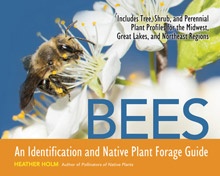As the snow blows in off Lake Huron and wild turkeys drop by for a feed, James Corcoran is preparing for a new phase in his working life – retirement. Expect it to be busy and enjoyable, as he concentrates on his tree nursery, Hoanaadia in Grand Bend, where he specializes in growing Eastern Hemlock from seed.
It will certainly be less hectic than his career with the provincial government: Corcoran is retiring as roadside vegetation manager for the West Region (Southwestern Ontario). He’s been the only one occupying that position in all of the province, there’s no similarly specialized person in the other four regions. Fortunately, he’s not the last. He’s presently being shadowed by his replacement - and took time to talk about his work at a recent online meeting of the Ontario Phragmites Working Group.
It's a job that became a lot more complex in recent years, he says. Blowing snow sweeping across the over-cleared flatlands of the southwest has created dangerous winter driving conditions. “All those thousands of acres and no forest to stop them - it’s led to frequent highway closures, particularly on Highways 4, 6 and 21,” he says. “The amount of snow that’s being transported is huge.”
Read more



















